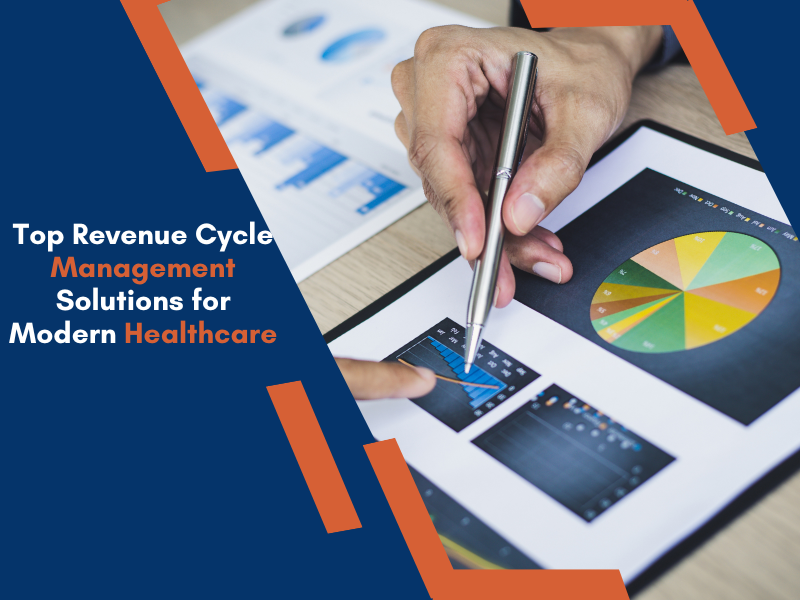In the rapidly evolving healthcare industry, effective Revenue Cycle Management (RCM) is essential for financial stability and operational efficiency. RCM encompasses every step in the process of collecting revenue from patient services—from registration to final payment. However, with complex payer requirements, rising patient financial responsibility, and regulatory challenges, streamlining RCM has become a top priority for healthcare providers.
This blog delves into key strategies for optimizing RCM, helping healthcare organizations maximize revenue, reduce claim denials, and maintain financial health.
Understanding the Revenue Cycle in Healthcare
Revenue Cycle Management is a comprehensive process that tracks patient interactions from initial scheduling through the final billing and collection of payments. Each step in the revenue cycle is critical for timely and accurate revenue collection:
- Patient Registration and Eligibility Verification: Collecting accurate patient information and verifying insurance coverage.
- Medical Coding and Documentation: Assigning the correct codes to diagnoses and procedures to ensure accurate billing.
- Claims Submission: Sending claims to payers with all required documentation.
- Denial Management: Addressing rejected or denied claims and appealing when necessary.
- Payment Posting and Collections: Recording payments and managing outstanding balances.
- Patient Billing and Follow-Up: Collecting payments from patients for services not covered by insurance.
Each of these stages is an opportunity to improve revenue collection, minimize delays, and reduce administrative costs.
Key Strategies for Streamlining Revenue Cycle Management
1. Automate Billing and Coding Processes
Automation is a powerful tool for reducing errors and improving efficiency in RCM. Billing and coding errors are a common cause of claim denials and delayed payments, so automating these processes can significantly reduce delays and improve cash flow.
- Automated Coding Software: Helps ensure accurate coding for diagnoses and procedures, reducing the risk of errors that lead to denials.
- Claim Scrubbing Tools: Automatically review claims for potential issues before submission, minimizing rejections and speeding up the payment process.
2. Verify Patient Insurance Eligibility in Real-Time
Insurance eligibility verification is crucial for preventing denials and unexpected patient balances. By verifying insurance coverage before services are rendered, healthcare providers can ensure accurate billing, reduce the risk of unpaid claims, and enhance the patient experience.
- Real-Time Eligibility Checks: Use software to verify insurance details at the time of scheduling or registration.
- Patient Financial Counseling: Clearly communicate out-of-pocket costs, co-pays, and deductibles to patients upfront to reduce confusion and improve collections.
3. Optimize the Claims Submission Process
Timely and accurate claims submission is essential to streamlining RCM. Developing a standardized claims process can help healthcare providers submit claims promptly, reducing the time it takes to receive payments.
- Standardize Claims Submission: Establish clear guidelines for completing and submitting claims to ensure all information is accurate and complete.
- Monitor Claims Status: Track submitted claims in real time to identify potential delays and take corrective action quickly.
4. Implement Effective Denial Management
Claim denials are a significant obstacle to revenue collection, with common reasons including coding errors, incomplete documentation, and eligibility issues. Implementing an effective denial management strategy can recover revenue from denied claims and reduce future denials.
- Analyze Denial Trends: Identify common reasons for denials and address them proactively to prevent recurrence.
- Set Up a Denial Resolution Team: Establish a dedicated team to review denied claims, make corrections, and resubmit claims promptly.
5. Focus on Patient Billing and Collections
As patient financial responsibility increases, effectively managing patient billing is more important than ever. Transparent communication, flexible payment options, and timely follow-ups can improve patient collections and prevent revenue leakage.
- Provide Clear, Upfront Cost Estimates: Educate patients about expected costs to avoid surprise bills and ensure they are prepared for their financial responsibility.
- Offer Flexible Payment Options: Providing online payments, payment plans, and financing options can make it easier for patients to pay their bills.
- Send Automated Payment Reminders: Regular reminders help patients stay on top of outstanding balances, reducing the risk of overdue payments.
6. Leverage Data Analytics for Insights and Improvements
Data analytics is invaluable for monitoring the effectiveness of RCM and identifying areas for improvement. By tracking key metrics, healthcare providers can gain insights into revenue cycle performance and make data-driven decisions to enhance RCM.
- Monitor Key Performance Indicators (KPIs): Track metrics such as Days in Accounts Receivable (DAR), net collection rate, and denial rate to evaluate RCM efficiency.
- Identify Revenue Bottlenecks: Use data to identify delays or inefficiencies in the revenue cycle and implement corrective actions.
7. Stay Compliant with Regulatory Standards
Compliance with healthcare regulations, such as HIPAA and ICD-10 coding standards, is essential for protecting patient data and ensuring accurate billing. Non-compliance can lead to audits, penalties, and lost revenue.
- Conduct Regular Compliance Audits: Periodic audits help ensure compliance with billing and coding regulations and minimize the risk of fines or legal issues.
- Invest in Staff Training: Provide ongoing training to billing and coding staff to keep them informed of regulatory changes and best practices.
8. Enhance Patient Communication and Engagement
Clear and open communication with patients is essential for successful RCM. Patients who understand their financial responsibilities and have access to support are more likely to pay their bills on time.
- Offer Patient Portals for Billing: A patient portal allows patients to view their bills, make payments, and set up payment plans, enhancing convenience and transparency.
- Provide Financial Counseling: Offering counseling to patients can help them understand their insurance coverage, costs, and payment options, improving collections.
Benefits of Streamlined Revenue Cycle Management
Streamlining RCM offers several benefits that go beyond revenue optimization, supporting overall organizational health:
Improved Cash Flow: Faster claims submission, prompt payment posting, and effective patient collections improve cash flow and financial stability.
Reduced Administrative Burden: Automating processes and standardizing workflows reduce administrative workloads, allowing staff to focus on more complex tasks.
Higher Patient Satisfaction: Transparent billing practices, clear communication, and financial counseling contribute to a positive patient experience, fostering trust and loyalty.
Enhanced Compliance: A streamlined RCM process ensures compliance with industry regulations, minimizing the risk of audits, fines, or penalties.
Data-Driven Decision-Making: Analytics-driven insights provide a clearer picture of RCM performance, enabling healthcare providers to make strategic improvements.
Conclusion
Revenue Cycle Management is a critical factor in the financial health of healthcare organizations. By implementing key strategies—such as automating billing processes, verifying eligibility, optimizing claims submission, managing denials, and enhancing patient collections—healthcare providers can streamline RCM, reduce errors, and maximize revenue.
As healthcare continues to evolve, a well-optimized RCM process will be essential for managing increased complexities, ensuring financial stability, and delivering high-quality patient care. With the right approach, healthcare providers can turn RCM into a strategic advantage, driving operational efficiency and supporting sustainable growth.





